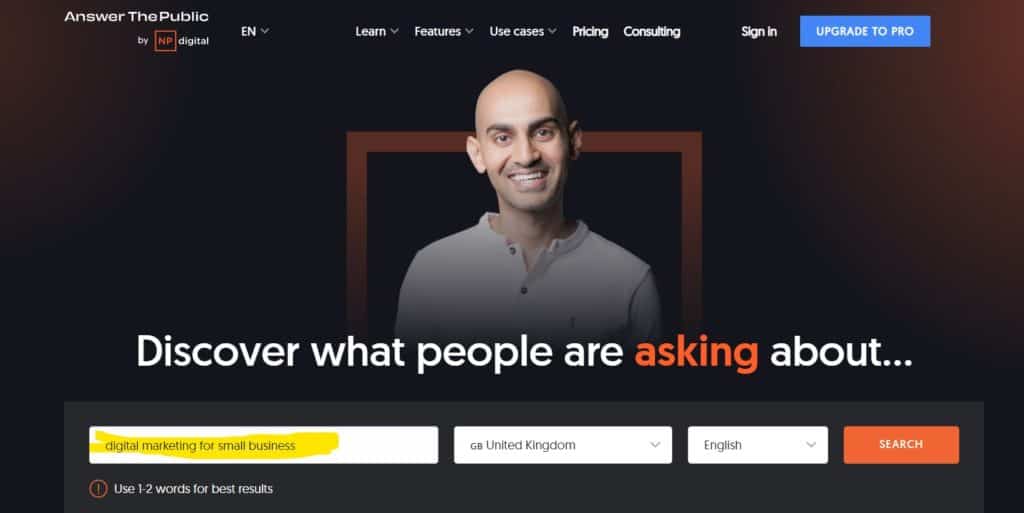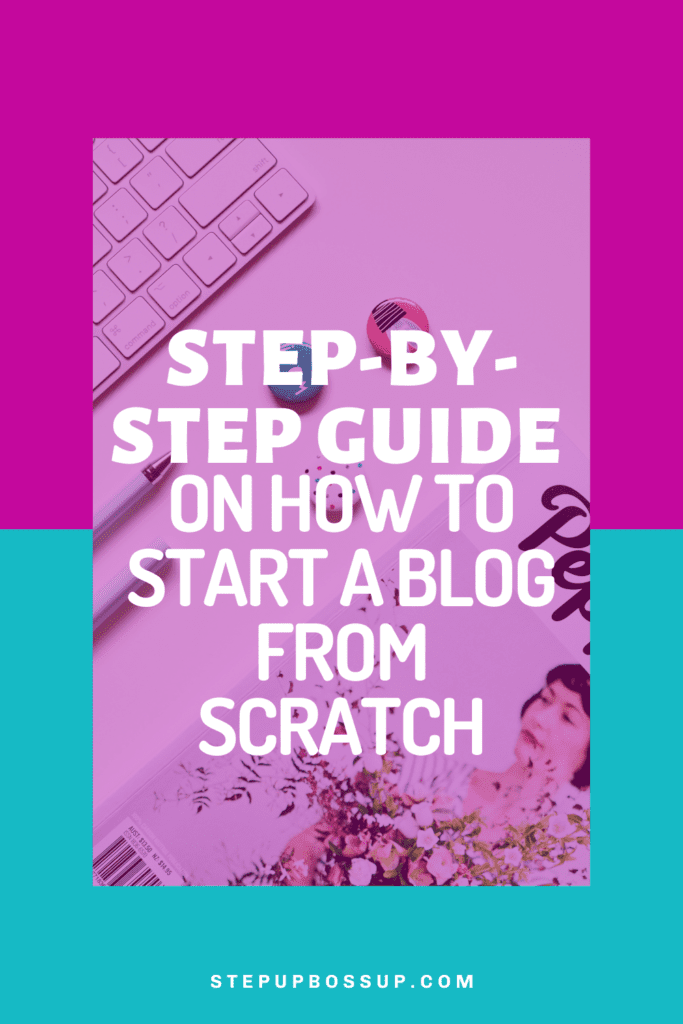Sharing is caring!
Interested in starting a blog but don’t know where to begin? Well, you’ve come to the right place!
Blogging is, in my opinion, one of the three foundational ways to build an online business using content. The other two are YouTube and podcasting. You get to express yourself, share experiences, and, of course, make money.
But why is blogging so important, and what are the benefits of starting your own blog?
For starters, blogging can be a great outlet for creativity and self-expression.
Whether you have a passion for writing, photography, cooking, or anything else, a blog allows you to share your unique perspective and voice with the world.
Additionally, blogging can also help you establish yourself as an expert or thought leader in your field, which can lead to new opportunities and connections.
And finally, starting your own blog means you’re creating your own platform that you control and can nurture and grow at your own pace.
So, who can start a blog, you might ask?
The answer is simple: anyone with the desire and ambition to
Whether you’re a stay-at-home mom, a college student, a professional, or a retiree, blogging is a career path that’s open to anyone with an internet connection.
So, what do you need to start a blog?
The good news is that it doesn’t require much—just a computer, internet access, and a blogging platform.
In this step-by-step guide, we’ll walk you through everything you need to know to start a blog from scratch.
From choosing a niche and a blogging platform to creating content and promoting your blog, we’ve got you covered.
So, grab a cup of coffee, get comfy, and let’s get started on your blogging journey!
How to Start a Blog From Scratch in 8 Easy Steps
Choosing a Niche
Choosing a niche for your blog is the first and most important decision you’ll make as a blogger.
Your niche will determine the content you create, the audience you attract, and the potential profitability of your blog. And if you want to make money, it’s important to know that not all niches are profitable.
Here’s how to choose the perfect niche for your blog:
Finding Your Niche
The first step in choosing a niche is to find something you’re passionate about.
What are your hobbies, interests, or areas of expertise? Do you have a unique perspective on a particular topic?
And the most important question is: what could you happily write and talk about for the next five years of your life?
Once you have a list of potential ideas, it’s time to narrow it down to the ones that have a chance at being profitable.
Profitable Blogging Niches
While it’s important to choose a niche that you’re passionate about, if you want to make money from blogging, then it’s also important to consider the profitability of that niche.
Some of the most profitable niches include;
- Personal Finance
- Health and Fitness
- Business
- Food and Drink
- Beauty and Fashion
- Technology
- Online Marketing
- Relationships
- Education
These niches have a large audience, and a high demand for quality content and their audiences have pain points that they are willing to pay money to solve.
Defining Your Target Audience
Once you’ve chosen a niche, it’s important to define your target audience.
Who are you writing for? What are their interests and pain points?
Understanding your audience is crucial for creating content that resonates with them.
It’s also important to note that you might start knowing who you want to write for and work back to discover which niche you can help them in.
Understanding Your Audience’s Needs
To create content that your audience will love, you need to understand their needs.
What questions are they asking? What problems are they trying to solve? What information are they looking for?
Answering these questions will help you create content that is valuable and relevant to your audience.
You can get these very quickly by using free tools like answerthepublic.com and Google Search Bar.
You can start by going to answerthepublic.com and typing in 2 – 3 words related to your niche and you will get all the questions people are asking about your topic.

You can then take a few of those questions and start typing into the Google Search Bar to see the autosuggestions.
Analyzing Your Competition
Before you start creating content, it’s important to analyze your competition.
Who else is writing about your niche? What are they doing well, and where are there opportunities for improvement?
Take the questions you discovered in the previous step and enter them in Google, look at the first page results and see if the results are from potential competitors, and review the types of content they are creating.
Use this information to create content that stands out and provides unique value to your audience.
Choosing a Profitable Niche
Finally, choose a niche that has the potential for profitability. While it’s possible to make money from most niches, some are more profitable than others.
When choosing your niche, consider factors like how much disposable income your target audience has, are there any affiliate marketing and sponsored content opportunities?
Can you earn from advertising, and are there pain points and desires your target audience are happy to pay to get solutions for?
By following these steps, you’ll be able to choose a niche that you’re passionate about, that resonates with your target audience, and that has the potential for profitability.
Domain and Hosting
So you’ve chosen your niche, and now it’s time to start building your blog.
The next step in the process is to choose and purchase a domain name and hosting.
Here’s what you need to know:
Choosing a Domain Name
Your domain name is the address that people will use to find your blog.
It’s important to choose a domain name that is memorable, easy to spell, and reflective of your brand.
This is usually the name of your business, but it doesn’t have to be.
You can use a domain name generator to help you come up with ideas, or you can brainstorm on your own.
If you need help, you can check out the Naming Your Business blog post.
Purchasing a Domain Name
Once you’ve chosen your domain name, it’s time to purchase it.
There are many domain registrars out there, but my go-to’s are Namecheap and GoDaddy.
I find Namecheap is currently the cheapest to get both new domains and renewals. You’ll see if you buy for multiple years the cheaper it gets so if you can afford it, I would go with that option.
Also, it’s fairly easy to edit when it comes to linking your hosting.
Choosing a Hosting Provider
Your hosting provider is the company that will store your blog’s files and make them accessible over the internet.
When choosing a hosting provider, consider factors like uptime, speed, security, and customer support.
Over the years I’ve switched providers a few times, so I’ve used a few and can tell you that it’s stressful switching hosting providers so you want to make sure you make the right choice, so don’t have to switch until you really need to.
My favourite and recommended providers are SiteGround, DreamHost and Hostgator.

Purchasing Hosting
Once you’ve chosen a hosting provider, it’s time to purchase your hosting.
Most hosting providers offer a variety of plans, ranging from basic shared hosting to more advanced options like VPS or dedicated hosting.
As you’re just getting started, shared hosting is fine and the best option.
Be sure to choose a plan that fits your needs and budget. All the providers tend to have special deals for new customers but take a look at the actual cost you’ll have to pay at the time of renewal to decide if it will fit your budget.
Connecting Domain and Hosting
Finally, you’ll need to connect your domain and hosting.
This is typically done by updating your domain’s DNS settings to point to your hosting provider’s nameservers.
Your hosting provider should provide you with detailed instructions on how to do this. It’s just a matter of copying and pasting in most cases.
By following these steps, you’ll be able to choose and purchase a domain name and hosting, and connect them to create your blog’s online presence.
Installing WordPress
If you’re ready to start your blog, one of the best platforms to use is WordPress.
Here’s what you need to know about installing and using WordPress:
What is WordPress?
WordPress is a popular content management system that allows you to create and manage your blog.
It’s user-friendly, and customizable, and offers a wide range of plugins and themes to help you create the blog of your dreams.
There are many benefits to using WordPress, including:
- Easy to use: WordPress is user-friendly and doesn’t require extensive technical knowledge to use.
- Customizable: With thousands of themes and plugins available, you can easily customize your blog to fit your brand and style.
- SEO friendly: WordPress is optimized for search engines, making it easier for your blog to rank in search results.
- Cost-effective: WordPress is free to use, although you need to pay for hosting and certain plugins.
Installing WordPress
To install WordPress, you’ll first need to have a domain name and hosting in place. Which you’ll have if you’re following this guide.
Many hosting providers offer one-click WordPress installation, making the process quick and easy.
Alternatively, you can download WordPress from the official website and install it manually but I wouldn’t recommend that.
Just head over to your hosting provider’s cPanel and find the one-click WordPress installation button.
Logging into the WordPress dashboard
Once you’ve installed WordPress, you can log into the WordPress dashboard to start creating your blog.
The dashboard is where you’ll manage your blog’s content, design, and settings.
To log in, simply navigate to yourblogname.com/wp-admin and enter your login credentials.
Exploring WordPress dashboard
The WordPress dashboard can seem overwhelming at first, but it’s actually quite user-friendly.
You’ll see a menu on the left-hand side with options to manage your posts, pages, media, and more.
You can also install plugins and themes, customize your site’s settings, and view analytics.
By using WordPress, you’ll have a powerful tool to help you create and manage your blog. With a little bit of practice, you’ll be able to navigate the dashboard and create amazing content in no time.
Customising Your Blog
So you’ve got your blog up and running on WordPress; now it’s time to start customizing it to make it your own.
Here’s what you need to know:
Choosing a Theme
A theme is the design and layout of your blog. WordPress offers thousands of themes to choose from, both free and paid.
When choosing a theme, consider your brand and audience, as well as the functionality you need.
I recommend getting started with Astra Themes, as it’s lightweight so won’t slow down your blog, and there are like a million ways to customize it.
At this stage, you might want to have a look around some popular theme marketplaces including ThemeForest and Elegant Themes to get an idea of the types of designs you like and want to incorporate into your site.
Installing a Theme
Once you’ve chosen a theme, you can install it from the WordPress dashboard.
Simply navigate to Appearance > Themes, click the “Add New” button, and search for your chosen theme.
Once you’ve found it, click “Install” and then “Activate”.
Customizing Your Theme
Most themes offer customization options, allowing you to change colours, fonts, and other design elements.
Free themes will have limited customization, but you can still do a hell of a lot with them.
To customize your theme, navigate to Appearance > Customize.
Here, you can make changes to your theme and see a live preview of the changes.
At this stage, you might want to hop over to Canva to create a quick logo for your blog.
Choosing Plugins
Plugins are add-ons that can extend the functionality of your blog. WordPress offers thousands of plugins to choose from, both free and paid.
When choosing plugins, consider the features you need and the quality of the plugin.
However, I believe there are some core plugins every blog needs to add ASAP;
- A security plugin like Wordfence Security or All-In-One Security (AIOS) – Security and Firewall
- A SEO Plugin like Rankmath or Yoast SEO
- A page builder like Elementor
- A backup plugin like UpdraftPlus – Backup/Restore or Duplicator – WordPress Migration & Backup Plugin
- A compliance plugin like Complianz | GDPR/CCPA Cookie Consent
- A coming soon page plugin like Website Builder by SeedProd — Theme Builder, Landing Page Builder, Coming Soon Page, Maintenance Mode
WordPress usually comes with some pre-installed plugins, which you can delete.
Installing Plugins
To install a plugin, navigate to Plugins > Add New.
Here, you can search for the plugin you want and then click “Install Now”. Once the plugin is installed, you’ll need to activate it.
Customizing and Setting up Plugins
Most plugins offer customization options or will need to be set up, allowing you to adjust the settings to fit your needs.
Especially the security plugins, SEO plugins and coming soon page plugins.
You’ll want to set up the security and a coming soon plugin right away.
The coming soon plugin will allow you to work on your site behind the scenes without having to worry anyone will stumble on your site when you’ve got no content up yet.
To customize a plugin, navigate to the plugin settings page. Here, you can make changes to the plugin and see the effects in real time.
By customizing your blog with a theme and plugins, you can make it stand out and offer the features and functionality you need. With a little bit of experimentation and creativity, you can create a blog that truly reflects your brand and style.

Creating Content
Now that you’ve got your blog up and running, it’s time to start creating content that will engage and inspire your audience.
Here’s what you need to know:
Understanding Your Audience
Before you start writing, it’s important to understand who your audience is and what they’re looking for.
What are their interests and pain points? What questions do they have?
By understanding your audience, you can create content that resonates with them and keeps them coming back for more.
So take the research you did right at the start when you were narrowing down your niche to start planning your content.
Planning Your Content
Once you understand your audience, it’s time to plan your content.
Create a content strategy that outlines the topics you’ll cover, the format of your posts, and the tone of your writing.
This will help you stay organized and focused as you create content.
Then plan out the first 5 pieces of content you’ll create to launch your site and plan out at least the first month’s worth of content you’ll create.
Writing Your First Post
When it comes to writing your first post, start with a clear and compelling headline that grabs your reader’s attention.
Introduce your topic and provide some context, then dive into the main points of your post.
Use subheadings, bullet points, and other formatting tools to make your content easy to read and digest.
You can use AI tools like ChatGPT, Copy.ai or Writesonic to generate outlines for your blog posts to get started faster.
I recommend you write your first 3 – 5 blog posts before removing your coming soon page and launching your blog to the world.
Publishing Your Post
Once you’ve finished writing, it’s time to publish your post.
Before you hit “publish”, make sure to proofread your content for spelling and grammar errors. Use tools like Grammarly to proofread quickly.
Add images and other media to make your post more engaging.
Then, hit the publish button. Share your post on social media to attract readers.
Creating a Content Calendar
To stay consistent with your content creation, it’s helpful to create a content calendar.
This is a schedule that outlines the topics you’ll cover and the dates you’ll publish your posts.
By planning ahead, you can ensure that you always have fresh content for your readers.
By understanding your audience, planning your content, and creating a content calendar, you can create compelling blog posts that engage and inspire your readers.
Remember, creating great content takes time and effort, but the results are well worth it. So get writing, and have fun!
Promoting Your Blog
Congratulations on creating your blog and starting to create amazing content! Now it’s time to promote your blog to reach a wider audience.
Here are some tips on how to promote your blog:
Understanding & Optimizing SEO
SEO stands for Search Engine Optimization, and it’s the process of optimizing your blog to rank higher in search engine results pages.
This means that when someone types in a keyword or phrase related to your blog topic, your blog has a better chance of appearing at the top of the results.
Understanding SEO is essential to driving traffic to your blog and getting more readers.
To optimize your blog for SEO, you need to focus on keywords, meta descriptions, and image alt tags.
You start by doing keyword research to identify the most relevant and high-traffic keywords for your niche.
Incorporate these keywords naturally into your content, including in your post titles, meta descriptions, and throughout your post.
Additionally, make sure your blog has a clear structure, with relevant headings and subheadings, and is easy to navigate.
Finally, focus on building quality backlinks to your blog from other authoritative websites, as this can help boost your blog’s authority and improve its rankings in search engines.
Building Backlinks
Backlinks are links from other websites that point to your blog. They help boost your blog’s authority and increase its visibility.
You can build backlinks by guest posting on other blogs, leaving comments on other blogs, and reaching out to other bloggers for collaboration opportunities.
Using Social Media
Social media is a great way to promote your blog and reach a wider audience.
Start by creating profiles on the platforms where your target audience is most active, such as Facebook, TikTok, Twitter, Instagram, LinkedIn, or Pinterest.
Share your blog posts on these platforms and engage with your followers by responding to comments and messages.
Use relevant hashtags to make your posts more discoverable and encourage your followers to share your content with their networks.
You can also use social media to build relationships with other bloggers and influencers in your niche, which can lead to guest blogging opportunities and collaborations.
By consistently sharing valuable content on social media and engaging with your followers, you can increase your blog’s visibility and attract more readers.
Guest Posting
Guest posting is when you write a blog post for another blog or website. This can help you reach a wider audience and build backlinks to your blog.
Look for blogs in your niche that accept guest posts and pitch them with your ideas.
Email Marketing
Email marketing is a great way to stay in touch with your readers and promote your blog. Offer a freebie in exchange for email sign-ups, and send out newsletters with updates on your blog posts and other relevant content.
Promoting your blog takes time and effort, but it’s essential to grow your audience and establish your online presence. By focusing on SEO, building backlinks, using social media, guest posting, and email marketing, you can promote your blog and reach a wider audience.
Monetizing Your Blog
Congratulations on building a successful blog and creating valuable content! Once you have a solid readership, it’s time to start monetizing your blog.
Blog monetization is the process of making money from your blog. There are many ways to monetize your blog, and the best way for you will depend on your niche, audience, and goals.
Here are a few of the ways you could consider:
Affiliate Marketing
Affiliate marketing is when you promote other people’s products or services and earn a commission for every sale made through your unique affiliate link.
To start with affiliate marketing, sign up for an affiliate program related to your niche and start promoting their products or services by creating content about them.
Display Advertising
Display advertising is when you place ads on your blog and earn money for every click or impression.
You can sign up for display advertising networks like Google AdSense or Mediavine and start placing ads on your blog.
Sponsored Posts
Sponsored posts are when you get paid to write a blog post promoting a brand or product. To get sponsored posts, you need to have a solid readership and engagement on your blog.
Reach out to brands in your niche or sign up for sponsored post platforms to start earning money through sponsored posts.
Selling Products or Services
Selling your products or services is a great way to monetize your blog. You can sell physical products like merchandise, digital products like eBooks or courses, or offer services like coaching or consulting.
Creating a Sales Funnel
A sales funnel is a series of steps that guide your readers towards making a purchase. It typically includes a lead magnet, email sequence, and sales page. By creating a sales funnel, you can turn your blog readers into paying customers.
Monetizing your blog takes time and effort, but it’s essential to turning your passion into a profitable business.
By using affiliate marketing, display advertising, sponsored posts, selling products or services, and creating a sales funnel, you can start making money from your blog.
Growing Your Blog
Now that you have your blog up and running, it’s important to focus on growing it.
Here are some tips on how to grow your blog:
Tracking Your Blog’s Analytics
Tracking your blog’s analytics is essential to understanding your readers and how they interact with your content. You can use tools like Google Analytics to track your blog’s traffic, demographics, and behaviour.
Understanding Your Analytics
Understanding your analytics helps you identify your readers’ preferences and what type of content resonates with them.
You can use this information to create more targeted and relevant content that your readers will enjoy.
Identifying Your Best-Performing Content
Identifying your best-performing content is crucial to growing your blog. Look at your analytics to see which blog posts are getting the most traffic, engagement, and shares.
You can then use this information to create more content that your readers love.
Creating More of Your Best-Performing Content
Creating more of your best-performing content is a great way to grow your blog. Use the topics and themes that are resonating with your readers to create more blog posts, videos, or social media content.
Networking with Other Bloggers
Networking with other bloggers is an excellent way to grow your blog and connect with like-minded people. Join blogging groups, attend conferences or meetups, and collaborate with other bloggers to grow your network.
Collaborating with Other Bloggers
Collaborating with other bloggers can help you grow your blog and reach a wider audience. You can collaborate on guest posts, podcasts, videos, or social media campaigns.
By collaborating with other bloggers, you can tap into their audience and grow your own blog.
Growing your blog takes time and effort, but by tracking your blog’s analytics, understanding your audience, identifying your best-performing content, creating more of your best-performing content, networking with other bloggers, and collaborating with other bloggers, you can grow your blog and reach more readers.
Conclusion
In conclusion, starting a blog from scratch can seem daunting, but it’s a rewarding experience that can help you share your ideas, knowledge, and passion with the world. Let’s recap the steps we covered in this post:
- Finding your niche and understanding your audience
- Choosing a domain name and hosting provider
- Installing WordPress and customizing your blog
- Creating valuable content and promoting your blog
- Monetizing your blog and growing your audience
Remember, success takes time, effort, and patience. It’s important to stay consistent, engage with your readers, and keep learning and improving. Here are some final tips for success:
- Be authentic and passionate about your niche
- Focus on creating valuable content that resonates with your audience
- Engage with your readers and build relationships
- Stay up-to-date with blogging trends and best practices
- Keep experimenting and trying new things
Starting a blog is a journey, and it’s a journey worth taking. I hope this step-by-step guide has helped you start your blogging journey and set you on the path to success. Good luck!

FAQs
Do I need any technical skills to start a blog?
You don’t need any technical skills to start a blog. With user-friendly platforms like WordPress, anyone can create a blog without any coding or programming knowledge.
How much does it cost to start a blog?
The cost of starting a blog can vary depending on your needs. You can start a basic blog for as little as $50 if you want more control over your blog and opt for a self-hosted WordPress site that requires a domain name and hosting.
How often should I post on my blog?
The frequency of posting on your blog depends on your niche and audience. It’s recommended to post at least once a week to keep your readers engaged, but some bloggers post multiple times a week or even daily. The key is to find a schedule that works for you and your audience and stick to it.
Can I change my blog’s niche in the future?
Yes, you can change your blog’s niche in the future. As your interests and passions change, you may want to shift your blog’s focus. However, it’s important to consider your existing readership and ensure that your new niche aligns with their interests to avoid losing them.
How long does it take to make money from blogging?
Making money from blogging takes time and effort. It can take several months or even years to build a loyal readership and establish yourself as an authority in your niche. However, with consistent effort and a monetization strategy, you can start making money from your blog in as little as six months.
Is it necessary to have a mailing list for my blog?
If you’re starting a blog as a business, then yes, it is. A mailing list allows you to build a direct relationship with your readers, keep them engaged, and promote your blog and products. You can use free tools like Mailchimp or ConvertKit to create and manage your mailing list.
Can I use my blog as a portfolio to showcase my writing skills?
Yes, you can use your blog as a portfolio to showcase your writing skills. A blog is a great way to demonstrate your expertise, writing style, and knowledge of your niche. You can include your blog in your resume or portfolio to showcase your skills to potential clients or employers.
How do I deal with writer’s block?
Writer’s block is a common challenge for bloggers. But with AI, it’s easy to overcome it. You can use AI tools to brainstorm ideas and topics, create outlines, and even write the first draft, so you never have to start with a blank page again.




